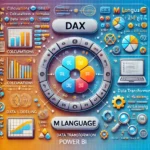ETL vs. ELT: Unraveling the Data Integration Approaches
In the ever-expanding world of data-driven decision-making, the ability to extract, transform, and load (ETL) data efficiently is crucial. As organizations gather vast amounts of data from diverse sources, the need for seamless data integration becomes paramount. Traditionally, ETL has been the go-to approach for this task, but in recent years, ELT has gained popularity as a more flexible and scalable alternative. In this blog post, we will delve into the differences between ETL and ELT, their respective advantages, and how they impact data integration workflows.
ETL: Extract, Transform, Load
ETL is a well-established data integration process that has been widely used for decades. It involves three primary steps:
a. Extract: In the extraction phase, data is gathered from various source systems, such as databases, applications, spreadsheets, and APIs. Extracting data can often be a complex task, especially when dealing with structured and unstructured data from different sources.
b. Transform: The data extracted is then transformed into a consistent and usable format. Data cleansing, validation, enrichment, and aggregation are common transformation tasks performed during this stage. The goal is to ensure that the data is accurate and in line with the destination system’s requirements.
c. Load: Finally, the transformed data is loaded into the target data warehouse or database, where it can be further analyzed and queried for business insights.
https://synapsefabric.com/2023/07/24/bugzilla-vs-github-a-comprehensive-comparison/
Advantages of ETL
- Data Quality: ETL allows for extensive data cleansing and validation, resulting in high data quality.
- Centralized Control: ETL enables centralized control over data transformation processes, making it easier to maintain consistency across various data sources.
- Legacy Systems: ETL is well-suited for extracting data from legacy systems and integrating it into modern data warehouses.
ELT: Extract, Load, Transform
ELT flips the traditional ETL process on its head, focusing on loading the raw data first and performing transformations afterward. Here’s how ELT works:
a. Extract: Similar to ETL, data is extracted from source systems, but in ELT, it is loaded into the target data warehouse in its raw, unprocessed form.
b. Load: The data is then loaded directly into the target system, often a data lake or data warehouse that can handle large volumes of raw data.
c. Transform: Once the data is stored in the target system, transformations are performed as needed. This step utilizes the processing power and scalability of the target data warehouse, allowing for more complex transformations and analytics.
Advantages of ELT
- Scalability: ELT takes advantage of the scalability and parallel processing capabilities of modern data warehouses, making it ideal for handling large datasets.
- Flexibility: ELT allows data analysts and data scientists to perform various transformations on the raw data, enabling them to explore and analyze it according to their specific needs.
- Real-time Analysis: ELT facilitates real-time or near-real-time data analysis as data is loaded without delay, providing more up-to-date insights.
ETL and ELT both serve the critical purpose of integrating data from diverse sources into a unified data repository for analysis and decision-making. ETL’s focus on data transformation before loading ensures high data quality and centralized control, making it suitable for structured data and legacy systems. On the other hand, ELT’s focus on loading raw data first provides scalability, flexibility, and real-time analysis capabilities, making it ideal for big data and modern data warehouses.
Ultimately, the choice between ETL and ELT depends on the specific needs of the organization, the complexity of the data sources, and the desired analytical capabilities. By understanding the differences between these data integration approaches, businesses can make informed decisions to harness the full potential of their data.






